



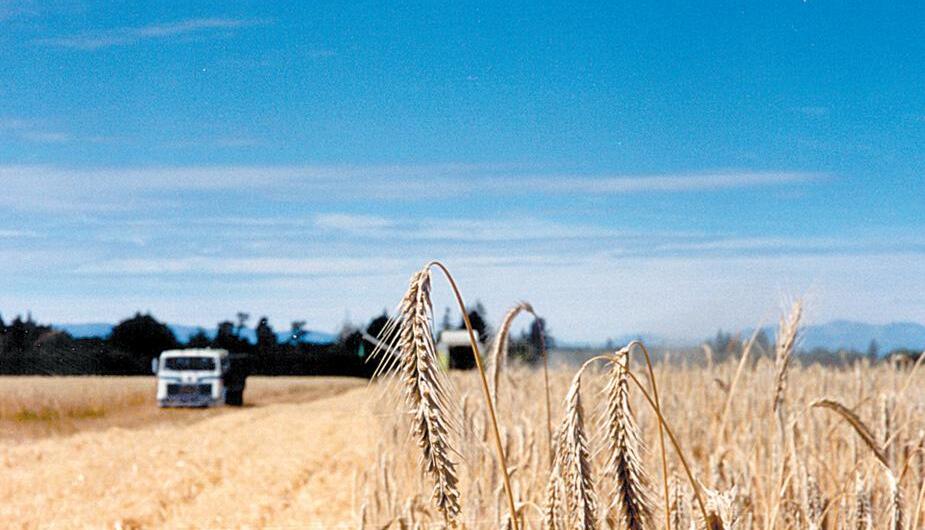

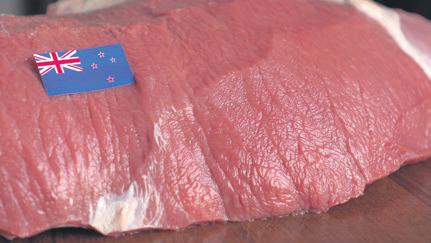
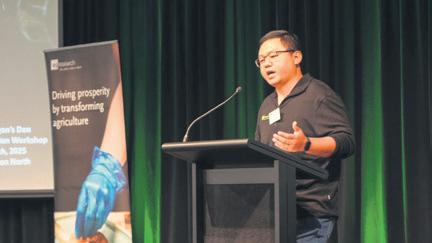

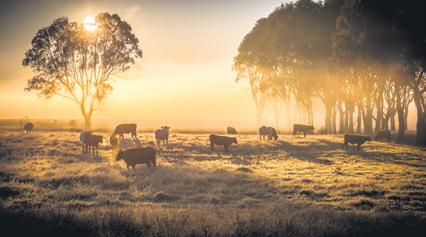




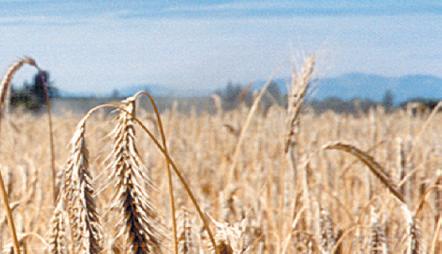


















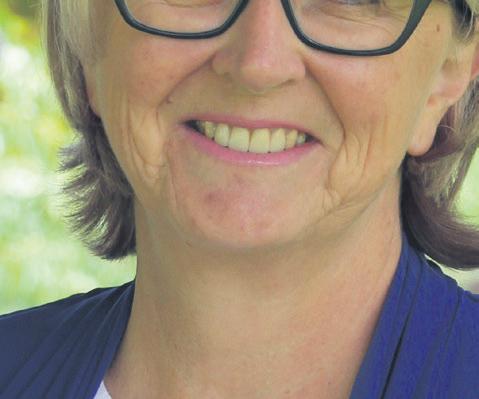











































































Rural Women New Zealand has welcomed the Government’s announcement of new and improved urgent and after-hours healthcare for rural communities but says this must be the start of a commitment to improve rural access to health services.
Sandra Matthews, National President of Rural Women New Zealand, said the investment recognises some of the current issues faced by rural communities, but a sustained effort is needed to address the challenges rural people face in accessing their healthcare needs.


We’re
“Rural communities should not be disadvantaged in our health system,” Matthews said.
“These new services, including on-call clinicians, access to basic diagnostics, and timely access to medicines, are a promising step.
“We welcome the inclusion of trials that will be developed in partnership with rural
providers, who know best how to respond to the needs of rural communities.
“However, real equity will only be achieved when every rural New Zealander can access quality healthcare, no matter their location.” Matthews said Rural Women New Zealand has long called for universal access to highquality primary and urgent care in rural communities.
TO PAGE 2
PRINCIPAL PARTNER
We love working with Bayleys Canterbury, who share our passion to support and grow women’s rugby and empower our wāhine to be the best they can be.
Sarah Munro | GM Matatū





The Family Proceedings Act which includes much of the law relating to family matters was passed into law in 1980.
riage had been living apart for at least two years and there was no likelihood of a reconciliation.
On 16th October 2024 Parliament unanimously added a further ground for an applicant to obtain an order for dissolution of marriage.
] Ronald W Angland & Son
Prior to the introduction of that Act there had been numerous grounds for divorce including separation, adultery, living apart for more than seven years and a few other minor grounds.
The new legislation introduced only one ground for divorce and that was two years separation, and the applicant had to provide evidence that the parties to the mar-
Where an applicant has a Protection Order against their former spouse they may apply for a dissolution of the marriage as soon as the Protection Order is granted rather than having to wait for the two years to elapse before they can apply.
Seeing Parliament act unanimously was quite unique. The bill was not a government bill, it was promoted by an New Zealand citizen, which generally does not happen.
Ashley Jones was the driving force behind the application to make the change,
and the legislation has been nick-named Ashley’s Law.
She had decided in 2020 to end her violent marriage but with the law as it was then she would have to wait for the two years to elapse before she could apply for a dissolution.
The two-year wait could result in further emotional stress and there was also a possibility of further abuse for all victims of a violent relationship.
It would be far better for both parties if marriages were ended once and for all times when the order for dissolution was granted. It would bring a final end to a stressful period of their lives.
Ashley Jones had spent four years pushing for the change in the law. She had to petition Chris Bishop, the Member for Hutt South, to bring the proposed change before Parliament.
It has taken some time for the change to be made but it has happened and should assist many victims of violence and/or abuse to recover sooner.
Ashley’s marriage was dissolved during her quest to add the further ground for obtaining a dissolution, but she continued with her determination to make the change for those who come after her with a similar problem.
Anyone suffering domestic violence from a spouse should be encouraged to seek assistance in bringing the violence to an end. There is help out there for them.
This article has been prepared by Bessie Paterson, a partner at Ronald W Angland & Son, Lawyers, 2 Chapman Street, Leeston.






The Government’s announcement includes extended after-hours and 24/7 on-call clinical support, as well as improved access to diagnostic services and medicines.








“The Government claims that this announcement will ensure that 98 percent of New Zealanders will be able to access urgent and after-hours healthcare within an hour’s drive from home,” Matthews said.
“Budget 2025 invests $164 million over four years to expand urgent and after-hours services across the country, including extended services across North Canterbury and Kaikoura, to help more people access care without long waits or travel.
“As part of this investment, improved urgent and after-hours healthcare is on the way for rural and remote communities, with services identified for Cheviot, Waikari, Hanmer Springs and Kaikoura.







“We welcome this commitment but achieving it will be a significant challenge, particularly when it comes to ensuring the sustainability of our rural health workforce.

“We continue to hear from rural women about long travel times to access basic healthcare, including effective care for mothers and babies, difficulty getting prescriptions filled after hours, and the stress of accessing diagnosis services. These are fixable problems but require sustained investment and planning.”
She said more will need to be done to ensure rural people have the same access to healthcare as other New Zealanders.
Kaikoura MP Stuart Smith said access to urgent and after-hours healthcare is being expanded across the country and will be particularly beneficial for North Canterbury and the Kaikoura regions.
“Strengthening urgent and after-hours care is central to our plan to ensure everyone can get the care they need, when they need it,” Smith said.
“These services include 24/7 on-call, in-person clinical support, better access to tests and checks, and urgent medicines.”
Smith said the new and improved urgent and after-hours services will be introduced over the next two years, alongside ongoing support for local urgent and after-hours healthcare providers.
“This investment is about putting patients first by strengthening healthcare services nationwide, to meet local needs and reduce wait times.
“This is a major step toward a healthcare system that works for everyone, ensuring all New Zealanders, including those in North Canterbury, have access to timely, quality urgent care, no matter where they live.”
Information for this article was supplied by Rural Women new Zealand, a nationwide charitable membership organisation with a history over nearly 100 years of empowering and supporting women at the heart of rural communities. You can learn more about RWnZ on its website: www.ruralwomennz.nz









A new social impact report demonstrates the impact the Rural Support Trust has in supporting and strengthening rural communities.
] by Kent Caddick
The report, supported by Fonterra and conducted by the Akina Foundation, showed that for every $1 invested into the delivery of Rural Support services, a social value of $4.60$5.50 is created.
Rural Support Trust’s National Chair Michelle Ruddell said the report outlines the positive outcomes and achievements Rural Support delivers to rural communities.
“Our purpose is to empower primary producers, their families and our rural communities with the support, tools and networks necessary to foster social connection and build business and personal resilience,” Ruddell said.
“I am proud of the work Rural Support has achieved and this report validates and proves the ongoing impact that we have. We are immensely grateful to our Foundation Partner Fonterra who made this project possible.”
Fonterra’s Group Director Global External Affairs Simon Tucker said the Co-operative is grateful for the Rural Support Trust’s ongoing support of rural communities.
“We know the ups and downs that come with working on the land and the stress that goes along with it,” Tucker said.
“This report demonstrates why access to wellbeing services is vital for our rural communities across New Zealand. We’re proud to partner with Rural Support Trust and want to thank them for continuing to show up for farmers and their families when they need it most.”
In 2024, Rural Support had over 1500 people reach out for support, with around 51% of cases also requiring additional specialist support networks.
Results from a recent survey showed 94%



of those who engaged with Rural Support felt less stress and on average a client’s mental wellbeing improved by 5.4 points on a 10-point scale. At the same time, 84% of those who had previously engaged with Rural Support had more knowledge about where to find external support when they needed it.
Ruddell said while it was good to see such a positive impact on a person’s wellbeing through their involvement with Rural Support it was concerning that an improvement of 5.4 points meant that many were getting into some dark places before reaching out for help.
Listen and learn: north Canterbury Rural Support Trust facilitator Geoff Spark (left) and local physiotherapist Jo HopkinsonHaigh organised an event in Rangiora to highlight the physical and mental health challenges facing those involved in farming earlier this year.
“Our ongoing work in destigmatising mental health challenges and normalising asking for help is critical to building strengthened rural communities.
“We want people to feel comfortable to reach out early before things feel out of control and we’re here to support regardless of the situation.”
Ruddell said the increasing complexity of cases means Rural Support is often walking alongside people for a much longer period of time.
“Our important role as a connector means our teams nationwide are widening their networks all the time to ensure suitable connections are readily available to support our farmers and growers.
“As the need for our support increases, a large part of our work is making sure our Rural Support team can support the demand while building connections in the wider support needed.”
This article was prepared with information supplied by the Rural Support Trust. For more information go to: www.rural-support.org.nz













]
Todd McClay ] Minister for Agriculture
Farming is the backbone of New Zealand’s economy supported by the 360,000 hardworking men and women who get up every day and go to work across New Zealand’s primary industries.
When our rural communities succeed, the whole country benefits—through jobs, exports, stronger regional economies and better living standards.
That’s why this Government is backing the primary sector every step of the way. We’re focused on restoring confidence, increasing profitability at the farm gate, and removing the red tape that has been holding rural New Zealand back.
We’ve taken decisive steps to get Wellington out of farming and give the sector the freedom it needs to thrive.
That includes removing agriculture from the Emissions Trading Scheme, banning full farm-to-forest conversions, introducing practical rules for winter grazing and stock exclusion, improving the freshwater farm plan system, and delivering common-sense changes to the RMA, water storage, and vegetable growing rules.
We’ve also rebalanced Te Mana o te Wai to better reflect the importance of food production and disbanded labours failed He Waka Eke Noa, ensuring that climate policy is driven by the science of no additional warming and productivity, not ideology.
Budget 2025 confirms nearly $5 billion in ongoing baseline support over four years for the primary industries through MPI.
This includes a new $246 million Primary Sector Growth Fund to co-invest in projects that deliver on investment in the near-to-medium term and boost productivity and resilience, $36 million to support farmer-led catchment groups, and more support for Ru-

ral Support Trusts and local wellbeing initiatives.
We’ve also committed over $400 million to help develop and roll out new tools and technologies that will reduce agricultural emissions without shutting down farms or sending production offshore. The first of these tools are expected to be commercially available within a year.
Trade is a critical part of our plan to double exports by value in ten years. Agriculture accounts for more than 80% of our goods exports and contributes around $10,600 per Kiwi to the economy.
To continue driving this we’ve secured new deals with the UAE and Gulf Cooperation Council, reduced $733 million in non-tariff barriers, and launched negotiations with India to open even more markets and deliver stronger farmgate returns.
Our commitment is clear: we’re backing the sector to grow, compete, and succeed –at home and abroad.
The Government will continue working alongside farmers, growers, and rural communities to deliver long-term economic growth, increase productivity and regional resilience for all New Zealanders.
‘
Trade is a critical part of our plan to double exports by value in ten years.








It is no secret that New Zealand is in financial trouble, we simply owe more than we can sell.
While the present Government keeps telling us we need to cut costs and save more, the majority of folk seem to think that the Governments promise to get us back into the black will do so without them having to reduce their own financial affairs.
My mind swings straight to the farmers situation which has evolved over generations.
Simply when things get tough, you put the cheque book in the bottom drawer, and you work out what you can do to increase cash flow. Perhaps an extra crop, buy in stores rather than burning off stubble, lease out some land to someone who wants more land for their spuds or whatever.
Remember when farming lost our subsidies and we had to drag ourselves onto the world markets and fight against countries that still had subsidies. Doom and gloom hit and there were those who said it was the end of the primary industry. Wrong. The industry swallowed hard and got on with it.
I think the rest of us should take a mo-
ment and look in the mirror and ask ourselves why we can’t help New Zealand get through the slump.
I was made redundant five times in seven years during the late ‘80s and early 90s, as were many others, but we didn’t lie down, we did what the farming industry did, we buckled down and fought our way back out.
Perhaps the modern generation doesn’t have the backbone or national pride to put their shoulder to the wheel. Has it been too easy for too long?
Another thought to consider, remember the fuel crisis and our nation wanted some help to get through it. We accepted carless days and got on with it. Again, I think of the Christchurch earthquakes and the farming army. They were here in the city clearing our streets and homes of silt while, in some cases, the city people sat and watched.
I seriously think it is time New Zealanders took a leaf out of farmers book and get on with it.
When the going gets tough, the tough get going. Harden up Kiwis.

New Zealand red meat exports during March achieved record values for any month with sales worth $1.26 billion, according to the Meat Industry Association.
] by Kent Caddick
Values were up by 34 per cent compared to March 2024, with volumes for both sheepmeat and beef up by 10 per cent.
Red meat exports for the first quarter of the year were also up, worth $3.28 billion, a 28 per cent increase on the first quarter of 2024.
The United States was the biggest customer for both the first quarter and for March, at $1.4 billion and $398.2 million respectively, followed by China at $832.5 million and $286.2 million.
MIA chief executive Sirma Karapeeva said the results were very positive and March was an exceptional month.
“We saw some increase in volumes, year on year, but a much larger increase in value. As well as being a record month for value overall, March also set a new monthly record for the value of beef to the US,” Karapeeva said.
“The full impact of the US tariffs are still unclear for exports to the US as well as for what they may mean for our exports to other countries.
“While there was only a small increase in the volume of sheepmeat exported during the first three months of the year compared to 2024, and beef volumes were much the same, the value for both increased significantly.
“This growth was largely driven by the same factors we have seen in the first two months of the year – – good demand for sheepmeat in the EU, recovery in sheepmeat prices in China and high demand for beef in North America.
“With the new US tariffs introduced in early April, we are yet to see what impact these are having on exports to the US.
“The one area where exports continued to be weak was beef to China, which was down 35 per cent by volume and value compared to last March.
“This was largely due to China continuing to import large volumes of beef from South America.”
Volumes of sheepmeat and beef exported during March increased by 10% compared to March 2024 to 47,286 tonnes and 49,247 tonnes respectively.


Value for money: MIA chief executive Sirma Karapeeva says as well as being a record month for value overall, March also set a new monthly record for the value of beef to the uSA.
The value of sheepmeat exports increased by 34 per cent to $523 million and beef was up 41 per cent to $534 million.
The volume of sheepmeat exports to China increased 9% to 21,213 tonnes but the value increased 38% to $140 million. This meant the average value of exports was $6.62/kg compared to $5.26/kg last March.
The volume of sheepmeat exports to the EU rose 31% to 8,750 tonnes and the value increased 54% to $151 million, slightly above the $150 million worth of exports in February, which had been the highest monthly value of exports to the EU since 2009.
Beef exports to the US rose by 55% by volume to 23,795 tonnes and the value was up 105% to $285 million.
There was also a further increase in beef exports to Canada, up 121% by volume to

3,246 tonnes and 192% by value to $36 million.
March was also a good month for fifth quarter exports. Compared to last March there was an increase on exports of most

‘This growth was largely driven by good demand for sheepmeat in the eu, recovery in sheepmeat prices in China and high demand for beef in north America.
Sirma Karapeeva

categories, and overall fifth quarter exports were up 19% to $203 million.
Information for this article was supplied by the Meat Industry Association. For more go to: www.mia.co.nz














spokesperson



Rural communities had the most to gain from pay equity, and now the most to lose.
In the move that shocked many, National pushed through legislation that wiped out 33 pay equity claims without warning or consultation, affecting up to 180,000 low-paid workers, mostly women.
These include teachers, nurses, midwives, social service workers, home support and aged care workers, and youth workers.
In our rural communities, these are the roles that hold the social fabric together. Across the country rural New Zealand is already struggling to fill teacher vacancies, keep up clinic hours, and provide aged care services.
Good progress was being made towards equal pay for the Kiwis who uphold our society. Instead of building on the work of successive governments and focussing on bringing women’s pay into balance with men’s, National turned their back to pay for the Budget.
While the Government hands tax breaks to tobacco companies and fossil fuel giants, support is cut to those who need it most, and rural communities are expected to continue to carry on.
For decades, thousands of New Zealanders have worked together to pave the path toward a more equal future. One of the most widely known is the women’s suffrage movement of 1893, which secured the right to vote.
But many more movements often led by women have brought lasting change that benefits all New Zealanders.

] with Steve Abel
‘It undoes decades of hard-won progress, built by hard-working people standing together for fairness.
Rural Women New Zealand have fought for better healthcare, education, and infrastructure in rural areas for over 100 years.
The Maori Women’s Welfare League drove major improvements in Maori families’ lives through health, housing, and education. And the Equal Pay movement, backed by unions and activists, helped secure legal protections that advanced fairness in workplaces across Aotearoa.
But our icons like Kate Sheppard, Florence Polson, Dame Whina Cooper, and Kristine Bartlet didn’t achieve change alone. They were backed by whanau, friends, and communities. Real progress has always come from strong networks and collective action, and there is more to do.


National’s choice to take money from 180,000 people doing essential work – often underpaid, undervalued, and overwhelmingly done by women – was wrong. It undoes decades of hard-won progress, built by hardworking people standing together for fairness.

New Zealand deserves a government that invests in, and lifts pay for hard-working Kiwis – instead of taking from them.
Now is our moment to continue the legacy of those who came before us and stand together for a future where everyone’s work is valued fairly.
In a world crying out for safe and natural foods, plans by the Ministry of Primary Industries for a 100-fold increase in the permissible levels of glyphosate residues, commonly known as Roundup, on wheat, barley and oats in New Zealand is bad news for people and the environment and takes our country in the wrong direction.
] Green Party Spokesperson
] for Agriculture
Glyphosate is a Probable Human Carcinogen according to the World health Organisation, linked to one of the most common forms of cancer – non-hodgkin’s lymphoma. Glyphosate may be genotoxic, meaning that it damages DNA.
Ingestion of the chemical by the public is only one concern. Farmers and farm workers who regularly use glyphosate also have the highest exposure rates and are therefore most at risk from increased use of the chemical.
The increase can be approved by MPI but could be stopped by the Minister of Food Safety, Andrew Hoggard. This seems improbable given Hoggard’s track record supporting glyphosate use.
If the increase goes ahead, we
will have permissible residues more than 100 times what is currently allowed in New Zealand and that would be double the permissible residues of glyphosate that Canada and Australia tolerate.
It seems more than mere coincidence that the change coincides with radical deregulation of genetic engineering in New Zealand which could see the import of glyphosate resistant “roundup ready” crops which have led to huge increases in glyphosate use and residues overseas and the creation of superweeds resistant to the herbicide.
Bayer, who now own the Roundup brand which was originally produced by Monsanto, has paid out billions to cancer sufferers exposed to glyphosate to settle lawsuits in the United States.
It is disturbing that environmental and human health impacts of increased herbicide residues on our food
are not top-of-mind for the Luxon Government.
Responses from Minister of Health, Simeon Brown, to written questions from the Green Party on advice requested from the Ministry of Health suggest that human health impacts aren’t being fully considered in the increased residues of the toxic herbicide.
On the question of increasing the maximum residue limit for glyphosate by 100 times Brown responded that “The Ministry has no involvement in this proposal.” There has seemingly been no advice sought by MPI on the potential health impacts.
In a world where we are acutely aware of the damaging legacy of agrichemicals and the human and environmental toll, and while many farmers go to great lengths to avoid these chemicals, increasing these cancerous residues goes against our golden reputation for being a producer of safe and natural foods.

Weed control is critical when it comes to keeping Canterbury communities safe from flood risks and also plays an important role in protecting biodiversity in the region’s land and waterways.
] Environment Canterbury
Healthy waterways are central to a thriving environment, providing a rich ecosystem for native animals and plants, and supporting agriculture and local economies.
However, waterways are vulnerable to infestations of exotic pest plant species that can choke braided rivers and restrict the natural functions of waterways with serious consequences.
Environment Canterbury (ECan) manages 59 river rating and drainage districts in Canterbury, and each rating district has an agreed level of service for community flood protection.
ECan rivers manager David Aires said left unchecked, invasive weeds in these areas are a significant flood risk.
“Heavily weed-infested riverbeds reduce flow capacity in a flood event, which increases the likelihood of erosion and out-of-river flooding,” Aires said.
“If this happens, typically the only resolution is mechanical intervention using diggers, which can be more intrusive to the river environment and very expensive for local ratepayers. Regular spraying can help avoid this.”
ECan Principal Biodiversity Advisor Frances Schmechel said weeds not only increase our risk of flood events.
“They are also a major threat to biodiver-

sity and prevent the river system from naturally braiding, said Environment Canterbury,” Schmechel said.
“Weed infestations provide cover for predators and can cause the loss of habitats, including some of our iconic native braided river birds which need clear gravels to nest and raise their chicks,” she said.
“The diversity of aquatic habitats is also impacted, potentially reducing the variety of native and sports fish that occupy our rivers.”

According to the Department of Conservation (DOC), weeds can carry diseases, alter the soil pH and use more water than native plant species.
“Weeds can displace native plant species and cause irreversible changes to native ecosystems,” said DOC Science Advisor Kate McAlpine.
ECan uses a number of methods to control weeds, including diggers and hand clearance where it is practical, however Aires said
given the large areas they manage it means herbicide is most often the best option for controlling vegetation across Canterbury’s waterways.
“We work hard to do this in an effective and safe way by following strict protocols.” Aires said longer term, the council is looking at trialling lower concentrations and different mixes to reduce herbicide use, as well as investigating the feasibility of other options.

Protect your family’s health - test your drinking water regularly.
• Know your well’s location and depth.
• Protect your well head.
• Check the historical use of the land to understand the risks.
• Test your water supply by taking a sample and sending it to a lab for analysis. Find out more ecan.govt.nz/drinkingwater
The live export sector, including dairy heifers to China, has been a lucrative market for New Zealand farmers across much of the last decade, offering significant trade opportunities and attractive prices for dairy cattle.
] Article supplied by Rabobank
But with a government ban on live animal exports in place since last year, and Chinese demand for dairy heifers waning, the future prospects for the sector are far less certain, according to a new industry report by agribusiness banking specialist Rabobank.
In its just-released report, “New directions for Oceania live dairy cattle exports in a slower market”, Rabobank says New Zealand enjoyed the advantages of the Chinese live export market for much of the past decade.
“However, this came to an end in April 2023 when the New Zealand government enacted a ban on all live exports by sea, including dairy cows,” report author, RaboResearch senior dairy analyst Michael Harvey said.
“Recently, a change of government has prompted discussions of a possible shift in policy. Potential changes surrounding a restart in live exports via sea could include ‘gold standard’ rules for animal welfare, along with purpose-built ships.”
Harvey said public consultation on the possible reinstatement of livestock export by sea is likely to kick off by the end of 2024.
“The topic has historically been divisive among the farming community, so uncertainty prevails in the short-term as to whether trade will be reinstated.”
He said the broader policy environment around live exports in Australia, New Zealand’s main source of competition for live exports prior to the ban, was also far from clear.

“While there has been no shift in policy on the live exports of dairy cattle, in May 2024, the federal government announced that the

export of live sheep by sea from Australia will end on 1 May 2028.”
Chin said should New Zealand trade of live animal exports be reinstated at some stage in the future, Kiwi exporters would likely encounter a markedly slower market.
“Oceania live dairy cattle trade volumes peaked at 233,000 head in 2022, with a combined total of 815,000 dairy cows exported from Australia and New Zealand between 2018-2023.
“However, by mid-2024, the flow of dairy heifers from Australia and New Zealand to China has slowed to barely a trickle. The slowdown began in 2023, due to a combination of New Zealand’s ban on exports along with a slowdown in Chinese demand, resulting in an annual decline of 83 per cent.
“Unsurprisingly, the drop in trade with China has taken a heavy toll on indicative pricing in the market for live dairy cattle exports.”
Based on RaboResearch analysis of Australian export data, the indicative Australian export FOB price per dairy cow peaked at USD 3,000 in 2022 but fell to USD 1,500 per head in 2023.
The Rabobank report said collectively, the Southeast Asian markets, including Singapore, Malaysia, Thailand, Indonesia, Vietnam, and the Philippines, are a large


milk-deficit region, with self-sufficiency rates ranging from one per cent to 50 per cent.
“There has been a renewed focus on local herd expansion and milk supply growth, through private and public investment, across some Southeast Asian economies to specifically address supply chain and milk price risks.
“This initiative secures a small but steady flow of live dairy heifer exports into the region. Reduced demand from China provides a more attractive opportunity for buyers in Southeast Asia, which might lead to an increase in trade moving forward,” Harvey said.













] with Andrew Wyllie ] Forsyth Barr

In contrast to the US, European markets have fared comparatively better since the start of 2025, supported by relatively low starting valuations.
The announcement of increased defence spending in Europe is providing a fiscal tailwind, and interest rates are expected to ease further also providing support.
The Australian equity market was initially caught up in the US-driven sell-off and concerns about the deteriorating outlook for global growth. But the ASX 200 has since managed to recover most of its early April losses and is now relatively flat for the year to date.
Bond markets have also been volatile, driven by shifting inflation and interest rate expectations in the US. Nonetheless, highquality bonds continue to offer relatively attractive income opportunities, and the combination of solid coupon rates and bond price gains has delivered good returns for fixed income investors over the past 12 months.
New Zealand recovery taking shape, but it’s early days
New Zealand’s economy has started to recover. While we’re not racing ahead just yet, things are moving in the right direction.
Trump’s new tariffs mean a 10% hit on about $9 billion worth of New Zealand exports to the US, including meat, dairy and wine, roughly 0.2% of our GDP. That’s manageable, but the bigger concern is the potential fallout if global trade slows more broadly. As a small, export-heavy economy, especially with close ties to China, New Zealand could feel the knock-on effects of disrupted supply chains and weaker global demand.
That said, there are bright spots. Commodity prices, especially for meat and dairy, have been climbing, helping support rural incomes. A weaker Kiwi dollar is also boosting export earnings. Plus, about 40% of our US export income comes from services like tourism, which aren’t hit by the tariffs.
So, while tariffs aren’t helpful, they’re unlikely to derail the recovery. If growth slows
more than expected, the Reserve Bank of New Zealand (RBNZ) could comfortably step in with more interest rate cuts to keep things on track.
New Zealand shares have struggled recently, in part due to the global uncertainty and in part due to the still tough backdrop for many domestic firms. But we see a more supportive outlook ahead. The local market
opments and policy uncertainty, particularly around US tariffs.
But history reminds us that periods like these are not the time to panic.
If you’d like to review your investment strategy or discuss your options in this environment, please get in

is relatively defensive, our domestic economy is slowly improving, and falling interest rates should provide a further tailwind. As rates drop, dividend-paying stocks are also becoming more attractive to investors seeking income.
Long-term focus in a short-term storm
After a strong performance in 2024, markets have been choppier so far in 2025. Recent months have seen unusually sharp market swings, driven largely by geopolitical devel-
This article was prepared as at 30 April 2025 and provides market commentary for the three-month period ending on that date. Andrew Wyllie is an Investment Adviser and Forsyth Barr’s Christchurch Manager. He can be contacted regarding portfolio management, fixed interest, or share investments on 0800 367 227 or andrew. wyllie@forsythbarr.co.nz. This column is general in nature, has been prepared in good faith based on information obtained from sources believed to be reliable and accurate, and should not be regarded as financial advice.


When you are thinking about your investment options, talk to Forsyth Barr To get personalised investment advice and portfolio management specific to your investing needs, talk to Investment Adviser Andrew Wyllie in confidence on (03) 365 4244 or email andrew.wyllie@forsythbarr.co.nz












Forsyth Barr invites you to join us for a presentation with our Senior Analyst, EquitiesMatt Montgomerie.
Matt will share valuable insights into the current state of New Zealand and global dairy markets, including Fonterra’s sale of its consumer businesses. He will also give an overview of the economy and financial markets, highlighting key themes and expectations for 2025. Light refreshments will be provided, followed by a question-and-answer session.
Venue: Dunsandel Community Centre, 1456 Tramway Road, Dunsandel.
Date: Wednesday, 25 June Time: 4:00pm-6:00pm RSVP: 11 June to cristy.monds@forsythbarr.co.nz or visit forsythbarr.co.nz/seminars
In many parts of Canterbury, winter grazing is in full swing. But as we move into the cooler, wetter months of winter, there’s a higher risk of damage to soils from grazing, as well as sediment, nutrient and pathogen loss into waterways and groundwater.
] Article supplied by
] Environment Canterbury
Your soil is your greatest asset, so holding on to it and protecting it for the future makes economic sense. Undertaking good management practices can help mitigate some of the risks that come with winter grazing. Here are some tips to consider:
Make sure staff know your winter grazing plan and how to follow it
The key to successful winter grazing is to have a written management plan, which is shared with and understood by all staff on the property. This also includes a plan about what to do if adverse weather conditions hit.
Leave an ungrazed buffer around critical source areas (CSAs)
CSAs are the parts of the paddock that can channel overland flow directly to waterways, and include gullies, swales, boggy areas, springs and areas of heavy stock traffic or stock camps. CSAs are buffer zones are covered in the national winter grazing regulations. Graze the paddock strategically Fence across slopes and start grazing at the top of the paddock where appropriate so standing crop can act as a filter. If there is a waterway present, graze from the opposite end of the paddock.
Back-fence your stock
Back-fencing stock off your grazed strips helps mimimise pugging damage and reduces runoff risk.
Place troughs and supplementary feed away from waterways and critical source areas.

Winter grazing: using portable troughs allows for easy movement of drinking water sources, keeping stock away from sensitive areas and reducing soil damage, while baleage should be placed in drier areas of the paddock, away from waterways and critical source areas.
Using portable troughs allows for easy movement of drinking water sources, keeping stock away from sensitive areas and reducing soil damage. Baleage should be placed in drier areas of the paddock, away from waterways and critical source areas.
Plant a catch crop after grazing
Where manageable, plant a fast-growing crop in spring such as greenfeed oats. This can make a dramatic difference to nitrogen losses from the paddock.


We’ve had questions from the community around managing the ‘last bite’, which refers to grazing the pasture that protects a waterway or critical source area once the crop has been eaten.
To minimise risks to waterbodies, the national rules state that Critical Source Areas adjacent to or within winter grazing areas must not be grazed at any time through to 30 September.
Plan ahead for next winter
When selecting your paddock for next year, take what you’ve learned in the current year
and consider how you can improve management, keeping in mind CSAs, buffers, slope, soil condition, and waterways.
Plan for your grazing keeping national and regional regulations in mind, and don’t forget to share information on setbacks and CSAs with any contractors involved in crop preparation or cultivation.
For more information about winter grazing rules as well as links to industry planning templates, visit ecan. govt.nz/winter-grazing
environment Canterbury’s land management advisors can provide support and advice around winter grazing practices. Call our customer advisory team on 0800 324 636 to get in touch.



How do you manage unhealthy stress? Awareness is key. The earlier you recognise the signs of unhealthy stress the better you’ll be able to manage them.
] Article supplied by Farmstrong
Recovery periods are vital. Daily and weekly ‘down time’ is important as well as taking a holiday after really busy times.
Secondly, come up with a plan. Instead of trying to do everything, it’s about asking yourself what are the one or two top things I need to work on right now? Focus on them and park everything else. Once you’re feeling back in charge and your stress levels go down, some of the other issues bugging you may disappear.
A way to cope with lots of demands is by reducing or delegating them to others. At what point would you consider it more than just ‘calving stress’ and be seeking help?
A general rule of thumb that a person is under unhealthy stress, is when their daily functioning and relationships are being impacted.
For example, if the person doesn’t seem themselves and shows ongoing changes in their normal behaviour and thinking patterns.
When we just keep going without a break from the ongoing physical or mental demands we are facing, our body finds it hard to keep up and the cracks begin to show.
A catch-up with your GP, a local counsellor, Rural Support Trust worker or supportive friend, can give you some ideas or a plan to get things back on track.
How do you prevent burnout?
When people are under pressure the things that disappear are often the things that keep us well and prevent us getting burnt out.
Continue to:
• socialise with other people
• exercise regularly
• eat well
• continue to learn
• contribute to the community
• get off the farm and do something you enjoy with others.
Building in enjoyable activities is really important. Those are the things that give us more coping space and keep us feeling on top of things.
For more on how to maintain your mental health wellbeing on the farm go to: www.farmstrong.co.nz Canterbury Farming thanks Farmstrong for being able to reproduce this article.





















Imagine trying to drive your car after someone had crimped the fuel line from your fuel tank to your engine. The car would still run but would quickly lose power on a hill or under load.
This is much like our bodies when they have insufficient Co Enzyme Q10 (CoQ10). CoQ10 acts like the fuel line in your car by transporting energy within cell energy factories called mitochondria to make the energy we need.
Co Enzyme Q10 (CoQ10) is an essential vitamin-like substance mostly made in our liver. While we normally make all the CoQ10 we need, some people because of age, health problems or medications can benefit from taking good quality CoQ10.
Be aware that the market is now flooded with low cost semi-synthetic CoQ10 which is chemically different from the naturally fermented CoQ10 that I recommend.
The most common reason for CoQ10 supplementation is for those using cholesterol lowering (statin) medication.
The side effects of statins are so common that they are diagnosable diseases called statin myopathy and statin neuropathy. The most common side effects are
muscle stiffness, pain and weakness. This can also cause general fatigue which often feels like a lack of motivation.
Statins inhibit the enzyme needed to make cholesterol. Unfortunately, this enzyme (HMG-CoA reductase) is also needed to make CoQ10. Restricting this enzyme reduces cholesterol but also CoQ10 by as much as 50%.
Drug companies are aware of this problem and hold patents for combining CoQ10 with statins. Until such drugs are available, I recommend those on statins supplement with 100-200mg of naturally fermented CoQ10.
If people have low energy or have other health issues, I often add a Mitochondrial complex that includes high grade CoQ10.
John Arts (Adv.Dip.nut.Med) is a nutritional medicine practitioner and founder of Abundant Health Ltd. For questions or advice contact John on 0800 423559 or email john@abundant.co.nz. Join his newsletter at www.abundant.co.nz.




An innovative idea for transforming mechanically deboned meat into a meat flake for seasoning has taken top honours in the Meat Industry Association’s first-ever Dragon’s Den competition.
Renyu Zhang, a senior scientist with AgResearch, has been named the winner of the inaugural contest, which challenged Kiwis to develop ground-breaking ideas to advance New Zealand’s red meat processing industry.
A total of 42 entries were received, with Zhang beating four other finalists to secure a prize of up to $10,000 to develop a business case and progress the idea into a research project.
Zhang’s unamification of mechanically deboned meat (MDM) proposal outlined a novel process to transform lower-value MDM into a meat flake with high unami (savoury flavour) which would be stable at room temperature and have uses as a protein enhancer and snack food.
Sirma Karapeeva, chief executive of the Meat Industry Association, said the high calibre of entries made selecting the five finalists and ultimately the winner a challenging task.
“The competition recognised that many people have transformative ideas but may lack the resources to bring them to life.
“We sought bold, innovative concepts in meat industry research and development that align with the Government’s ambitious goal of doubling export value.
“All the finalists deserved credit, however, Renyu Zhang’s idea stood out both for the innovative process proposed and the opportunities for global interest in such a product.”
Zhang said he was pleased to win the competition and get an opportunity to take the project to the next stage.
“I’m honoured to win this inaugural Dragon’s Den event, and grateful to MIA for this opportunity,” he said.
“We have exciting opportunities to turn low-value streams from the meat industry into high-value, uniquely Kiwi products that can strengthen our global presence and add to our unique Kiwi taste profile. I look forward to working with industry partners to bring this vision to life.”
The Dragon’s Den final took place at the joint AgResearch-MIA Meat Innovation Workshop in Palmerston North in March. Contestants each had five minutes to pitch their ideas to the judging panel, followed by five minutes of Q&A with the judges and audience.
The judging panel featured industry leaders, Sirma Karapeeva, Andrew Clark, Investment Manager, Ministry for Primary Industries’ Sustainable Food and Fibre Team, Steve Cartwright, Business Manager, Healthcare, ANZCO Foods and Bruce Fyfe, General Manager, Commercial, Auckland Meat Processors.




Success in calf rearing is often measured by minimizing health issues and achieving target weaning weights.
] Advertorial supplied by ] Probiotic Revolution
However, research has shown that if early milk volumes are high better tissue is being laid down in the udder in the first five weeks of a calf’s life, and this impacts subsequent heifer milk production.
“This means we should have a 30-day target weight we are aiming for.” says Matt Collier of Probiotic Revolution.
“You could ad-lib feed milk to get there but there will be minimal consumption of hard feed.
“With our Calf Xtreme probiotic we get to once-a-day feed rates that are not far off adlib rates, but there is great consumption of meal hay and grass and better rumen development.”
This approach prevents nutritional scours, when the excess milk carries Calf Xtreme into the rumen boosting digestion and intake of hard feed.
“The result is faster growth, with a survey showing calves reaching target weaning weights 11 days earlier,” he explains.
Matt cites an example of Stratford farmer John Weir who used Calf Xtreme to change
from feeding two litres twice a day to seven to eight litres once a day by day ten.
“Calves can’t normally get to this level of milk without getting scours but accompanied with a higher intake of meal and grass they are growing better after weaning off milk.
“Milk production from these heifers compared with mixed age cow production has lifted from 74% to 86%. That’s a lift of 50 kg milk solids or over $500 per heifer for about $10 of Calf Xtreme
“With large calf rearing operations overcoming disease challenges is critical and by increasing the dose of Calf Xtreme we can generally maintain a high milk rate to assist a speedy recovery”.
Kapuka dairy farmers Brooke and Blair McKenzie rear 800 calves each spring. Last spring, they experienced only two unexplained calf losses after they left their calf rearing shed.
Their calves still have some Rotavirus challenges every year in-spite of vaccinating cows. They primarily manage these health issues by lifting the daily Calf Xtreme dose three or fourfold.
Brooke emphasizes the role of nutrition



in these results: “Following Matt’s advice, we now feed seven to eight litres of milk once a day by day ten, instead of three litres twice daily.
Hay consumption increased, and with a growth rate of 1kg/day and improved immu-


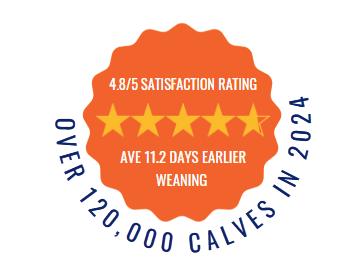
“We used to feed our calves 2L twice a day and now we’re 7-8L once a day. Our heifers are now doing 87% of the production of mixed age cows. That’s an increase of 12.1% or 50kgms because of the changes we have made to our calf rearing.
John, Taranaki "We’ve slashed our calf illness and deaths using Calf Xtreme. Just 212 in sick pens and only 8 losses out of 7,000 calves last year. This year is shaping up to be similar." Chris, Okoroire




Ultra-Scan NZ Ltd, is New Zealand’s leading ultrasound pregnancy scanning and disbudding specialists, celebrating this year being in business for 30 years making them leaders in the field.
] Article supplied by Ultra-Scan
Ultra-Scan offers fast and reliable results supporting farms of all sizes providing the country’s dairy and beef farmers with critical information for making important farm management decisions.
Ultra-Scan is a 100% Kiwi-owned and operated business, and its commitment to local ownership ensures a deep understanding of Kiwi farming values and a steadfast dedication to serving the needs of New Zealand farmers.
The company’s ultrasound pregnancy scanning accurately determines pregnancy status and foetal ageing as early as 35 days after mating.
Foetus can be aged up to 90 days and able to identify twins. The scans provide invaluable data for planning of calving spread, optimising breeding programs, and ensuring the overall health and productivity of a herd.
Ultra-Scan also specialises in calf disbudding, providing a seamless solution which saves farmers time, energy, and manpower during one of the busiest times of the year. They also offer deteating, vaccinating, tagging, castration and DNA testing.
The MPI-approved system is designed for efficiency, hygiene, and stress minimisation during the process, incorporating the use of local anaesthesia and offer additional pain relief on request.

Calves are dehorned between four days and 10 weeks of age, ensuring their safe-


Precision scanning: ultra-Scan’s ultrasound pregnancy scanning accurately determines pregnancy status and foetal ageing as early as 35 days after mating.
ty and comfort within UltraScan’s purpose-built calf crates.
Ultra-Scan technicians undergo annual certification by vets through VOI (Veterinary Operating Instruction), ensuring adherence to the highest standards of care.
As part of the company’s commitment to animal welfare, calves under the IHC Calf Scheme are dehorned free of charge.
Ultra-Scan will be operating in the Canterbury and Ashburton Areas for all your disbudding requirements this coming season.
Don’t forget we can also provide other services while undertaking your disbudding such as vaccinations, elastration of bull calves, spare teat removal, tagging and DNA Testing, so make the call now to secure your bookings.
For more on ultra-Scan and what they offer go to their website: www.ultra-scan.co.nz, or call on 0508 858 727, or email: info@ultra-scan.co.nz
For prevention and treatment of calf scours caused by Rotavirus 6 &10, Crypto. Rotagen Combo is anti-biotic FREE and GMO FREE.
Enerlect is a high energy source electrolyte that also supplies all the important electrolytes lost during diarrhoea casued by infectious agents or due to a nutritional imbalance.
Virucide, biocide and deodoriser for all surfaces on farm including farm sheds and animal housing such as calf pens. Vetsan is active against all the important pathenogenic micro-organisms that can cause calf scours including Rotavirus, Cryptosporidia, Salmonella, E coli, Coronovirus. Also effective against Mycoplasma Bovis.
Enerlect and Rotagen Combo are registered pursuant to the ACVM Act 1997, Enerlect A9276, Rotagen Combo A9928



DairyNZ subsidiary New Zealand Animal Evaluation (NZAEL) will update the genetic base used to calculate Breeding Worth (BW) this month.
]Article supplied by DairyNZ
This routine update will cause a drop of approximately $185 in BW across all cows, bulls, and herds but does not reflect any loss in genetic value or animal performance.
To assist with ranking within a population, it’s helpful to have a benchmark. In animal evaluation, this reference point is called ‘Base Cow’. A Base Cow change causes very minimal re-ranking among bulls, cows, herds or breeds. It simply shifts animals up or down depending on the genetic base that is chosen. Base Cow creates a yard stick to measure how much genetic progress is being made with each passing generation.
NZAEL manager Andrew Fear said New Zealand’s dairy herd continues to make meaningful genetic improvement.
“Each generation of heifers enters the herd with higher BW on average, than the previous generation, leading to higher protein, fat and greater efficiency.
“Updating the Base Cow ensures BW remains an important and accurate ranking
tool, reflecting the performance of today’s dairy animals.”
From 20 June, the BW of the average dairy animal will move from $241 to $56. This shift follows the introduction of an updated reference point, known as a Base Cow, which will now be based on 2015-born animals instead of the current 2005 cohort.
“Farmers should expect to see a drop in BW figures when accessing herd records after 20 June,” Fear said.
“However, it’s important to remember that the relative ranking of animals will remain largely unchanged, and the actual genetic merit or production potential of animals has not diminished.”
The update has caused very little change in the rankings of cows, bulls, or herds. One trait, Udder Overall, will impact BW differently after the base change due to the way it is incorporated in BW. However, the overall rankings remain highly consistent, with a greater than 99% correlation to previous positions.
When making breeding decisions or bench-

marking animals, farmers are encouraged to:
• Check the date of herd data to ensure a fair comparison
• Understand that a lower BW number reflects the new Base Cow, not a reduction in animal quality
• Focus on relative rankings between animals and long-term performance trends




From 2025, the genetic base will be updated every five years, in line with international standards, to ensure BW continues to reflect genetic progress. The next updates are planned for in 2030 and 2035.
Further information about the BW update, including a detailed breakdown of the genetic base cows and changes to Breeding Values, is available on the DairynZ website.













A plant technology company that has been a major contributor to the success of New Zealand agriculture for more than two decades has been recognised with the supreme honour at the 2025 Science New Zealand Awards.
and growers can use to enhance the productivity and sustainability of agriculture in this country.”
AgResearch subsidiary, Grasslanz Technology Limited, was named the supreme award winner in recognition of its record of introducing valuable new types of pasture and related technologies that have helped livestock industries to thrive.
Among these is the commercialisation of the AR37 Epichloë endophyte developed by AgResearch scientists, which provides resistance to pests and has been independently estimated as contributing $3.6 billion to the New Zealand economy over the life of its 20-year patent.
“This award is a real credit to the many people who have been a part of the enduring success of Grasslanz Technology,” Grasslanz Technology chief executive Megan Skiffington said.
“That means everyone from the science teams who made the discoveries and did the research, through to those who partnered with us because they believed in turning this research into products that farmers
The Chairs of the Judging Panels for the Science New Zealand Awards, who selected the Supreme Award winner, said Grasslanz Technology stood out “because of its contribution to the growth of the New Zealand economy through excellent science directed to solve issues faced by the primary sector in an economically and environmentally sustainable fashion”.
The Science New Zealand Awards celebrate the best of the science and its impacts across New Zealand’s Crown Research Institutes and Callaghan Innovation.
The Government announced earlier this year that the seven Crown Research Institutes will soon be merged into new Public Research Organisations, including one that includes AgResearch and is focused on the bioeconomy.
Skiffington said this new structure presents exciting possibilities for Grasslanz to grow its reach and seize other opportunities to bolster the primary sector.

“This includes opportunities using technologies such as genetic modification and gene editing in pasture and beyond.
“We know that farmers and growers do better when backed by great science. With our partners, Grasslanz has delivered that
impact on the ground. We think we will be able to bring even more value to the new Public Research Organisation with our proven business model, helping a larger pool of scientists to provide solutions to those farmers and growers.”




The first livestock feeding trial with AgResearch’s genetically modified High Metabolisable Energy (HME) ryegrass has shown promise for reducing methane emissions.
] Article supplied by AgResearch
Only a small-scale trial with sheep on a restricted diet over 11 days was possible, given the requirement to grow the HME ryegrass in specialised containment glasshouses and having to ensile (preserve) multiple harvests over 18 months to obtain enough for the feeding trial.
However, scientists working on the HME ryegrass programme are encouraged by the results from the trial.
Measurements taken from sheep fed ensiled HME ryegrass (with its increased lipid content) showed methane emissions were reduced 11 per cent when expressed as a percentage of GEI (Gross Energy Intake).
When expressed as grams of methane per kilogram of DMI (dry matter intake), the reduction was 7 per cent.
There was a trend for feed intake to be reduced on the HME treatment, which is in line with previous research where AgResearch scientists supplemented lipids to sheep grazing ryegrass.
In this previous work, the lowered intake did not result in a reduction in animal performance, raising the possibility that an unrestricted diet of HME ryegrass may have a greater reduction in methane emissions due to a reduction in methane per unit of intake, and reduced intake. This would need to be experimentally tested.
The recent feeding trial was supported by the New Zealand Agricultural Greenhouse Gas Research Centre, Grasslands Innovation Limited, and AgriZeroNZ. The HME ryegrass, developed by AgResearch scientists with the support of Grasslanz Technology, PGG


On trial: Sheep on the HMe ryegrass feeding trial. showed methane emissions were reduced 11 per cent when expressed as a percentage of Gross energy Intake.
Wrightson Seeds and DairyNZ, is achieved by adding two modified plant genes to increase the lipid content in the leaf.
In the feeding trial, the sheep were fed HME ryegrass with almost double the lipid content compared to the unmodified ryegrass silage (4.4% vs. 2.3%, respectively).
In addition to a reduction in methane, the higher level of lipid in HME ryegrass is also expected to result in an increase in the nutritional value, which has the potential to boost farm productivity.
Also, in 2023 the research team published research showing that HME ryegrass can reduce emissions of nitrous oxide, another potent greenhouse gas.
The HME ryegrass has been developed and grown in labs and glasshouses in New Zealand, in line with the country’s regulations.
When grown in paddocks, it will have the distinct advantage of being available to livestock to routinely graze, as opposed to being fed as a supplement.
The programme is currently seeking investment to fund the next stage of the work toward commercial handover to its seed company partners.
Further research and trials of the HME ryegrass may take place in New Zealand or Australia depending on funding arrangements.












Rising carbon dioxide levels in the atmosphere are altering phosphorus (P) available for plant growth, potentially leading to costly and unnecessary fertiliser application by farmers.
] Article supplied by
New research published in the Global Change Biology journal by scientists from AgResearch and Lincoln University has found that the test used in New Zealand to estimate the amount of available P in the soil may be underestimating the true accessibility of this crucial element for pasture plant growth.
The research, which drew on data from a long-running AgResearch experiment in which carbon dioxide is artificially elevated on an area of grazed pasture, is the latest to throw up surprising new results about what happens under rising carbon dioxide levels tied to climate change.
Lead author of the research, Zac BeecheyGradwell, said for decades New Zealand farmers have relied on the Olsen P test to determine the P available in soils and to guide decisions about fertiliser use.
“The data from the AgResearch experiment shows a substantial and sustained reduction in available P in the topsoil extracted by the Olsen P measure under elevated carbon dioxide, prior to annual P fertiliser ap-
plication. In addition, the effectiveness of P fertiliser in raising Olsen P was significantly reduced,” Beechey-Gradwell said.
“Scientists have known for a while that elevated carbon dioxide reduces the amount of P extracted by the Olsen P test, but we didn’t fully understand why or what the consequences of this might be.
“Our latest research confirms that more of the fertiliser P that is applied under elevated carbon dioxide is rapidly converted into organic forms in the topsoil, in a process called ‘biological immobilisation’. This essentially makes it invisible to standard soil P tests.”
He said if a soil P test indicates phosphorus deficiency, farmers may respond by applying more fertiliser than is necessary, driving up costs without improving pasture performance. “Phosphorus is an essential macro-nutrient for plant growth. Without it, production will decline.
“At a minimum, this research suggests we are going to need to recalibrate soil P test targets under elevated carbon dioxide to ensure that P fertiliser recommendations remain cost-effective and environmentally sustainable in the years ahead.”




Asking the question: Researcher Zac Beechey-Gradwell says the Olsen P test which determines the phosphorus available in soils and is used by farmers to guide decisions about fertiliser use maybe inaccurate due to elevated carbon dioxide levels in the atmosphere.
AgResearch principal scientist Alec Mackay said the phosphorus findings have landed against a backdrop of expected gains in pasture productivity not materialising under climate change.
“We need further research to see if similar trends are occurring in different soil types, and what the impact is on clovers and nitrogen fixation,” Mackay said.
Research co-author, Professor Leo Condron of Lincoln University, said phosphorus fertiliser manufacture in New Zealand is dependent on imported phosphate rock.
“The cost of phosphate rock has increased and become more volatile since 2007-08, and it is therefore important to ensure that fertiliser P is being used efficiently,” Condron said.




New Zealand veterinarians are working with emergency management networks to improve and promote safer practices for managing animals during emergencies and natural disasters.
] by Kent Caddick
The New Zealand Veterinary Association Te Pae Kirehe (NZVA) took part in the first Australasian Animals Emergency Incident Management Network (AEIMN) conference at Massey University last month which brought together expertise from the UK, Australia and New Zealand.
NZVA Emergency Lead Leanne Fecser said veterinarians and their teams play a critical role in animal welfare under the national Civil Defence Emergency Management Plan (CDEMP).
“Normally, owners are primarily responsible for their animal’s welfare, but things change in a natural disaster when people may be injured, isolated or separated from their animals and unable to care for them,” Fecser said.
“Animals depend on our veterinarians and their teams for their wellbeing, and our communities rely on our expertise to navigate the complex challenges emergencies bring.”
Under the Veterinarians Act veterinarians are legally obliged to alleviate the suffering of animals and likewise in emergencies hold key responsibilities to do so under the CDEM, including advising on where to get treatment and coordinating advice on feeding and sheltering animals.
“During Cyclone Gabrielle our veterinarians and their teams worked around the clock, often without power, communications

and in isolated areas to care for injured and sick animals and provide advice to their owners, many who’d been evacuated to shelters with nowhere for their pets to go,” Fecser said.
“Farm animals in particular suffered a lot and, in one case where a farmer in an inaccessible area needed pharmaceuticals to treat their stock, the veterinarian organised a helicopter to deliver them. In many cases, vets also treated animals for free where displaced people had no money.






“Overall, the cyclone gave us a glimpse of how a more catastrophic event could impact our animals, our industry and communities.” She said in the wake of and informed by Cyclone Gabrielle, the NZVA developed a dedicated Emergency Management Plan to ensure veterinary professionals and teams are prepared for and part of a coordinated response and recovery from natural disaster.





Response: Animals caught up in natural disasters such as flooding will benefit by a move by the new Zealand Veterinary Association to improve its practices for managing animals during emergencies and natural disasters.
This includes training, an Incident Management Team, and other ready to go response roles.
“We report directly to the Ministry for Primary Industries’ Animal Welfare Emergency Management (AWEM) team, as one of the agencies responsible for animals in an emergency. They rely on us for situational information from the veterinary teams we have on the ground to support their decision-making and coordination of resources.”
Fecser said the NZVA will review and update its Emergency Management Plan response and recovery framework after an emergency to ensure the ongoing effectiveness and efficiency of its response and support for veterinary professionals.
The NZVA is also a member of the National Welfare Coordination Group for humans and animals that meets quarterly.
Information for this article was supplied by the new Zealand Veterinary Association. For more go to: www. nzva.org.nz





















































Thousands of hunters gathered at wetlands and waterways around the country early last month to mark the start of the 2025 game bird season.
] by Kent Caddick
Fish & Game (F&G) chief executive Corina Jordan said opening Weekend brings together friends and family in a tradition that for many goes back generations.
“It’s about connecting with our rural heritage, sustainable harvesting of kai, and enjoying the mental and physical benefits of getting out in nature with friends and family,” Jordan said.
She said farmers a vital role in keeping the tradition alive.
“I also want to acknowledge and thank those farmers who generously open their farms to hunters and give people from urban and other areas the opportunity.
“Their support ensures the tradition of game bird hunting continues,” Jordan said.
Many parts of the country experienced fine weather, though hunters prefer rain and wind as it keeps ducks on the move rather than settled on lakes and ponds.
“Some regions were impacted by recent flooding while others are still recovering from drought but, overall, most regions have had
Family tradition: The Pooley family, (from left) Jeremy, eva, Aila, Kairyn and Simon Pooley, were out in force for the opening of the game bird season in the nelsonMarlborough region.
a good start to the season.”
Jordan said compliance with hunting regulations was strong, with rangers out checking licences and making sure bag limits were being followed.
North Canterbury F&G field officer Matthew Garrick said teams across the region had spoken to about 60 hunters over opening morning.
He said spirits were high but fine weather and recent flooding meant mallards were dispersed across ponds and puddles and not taking to the air.
“However, while mallards were challenging to hunt many hunters took the opportunity to hunt paradise ducks instead.
“I’ve been pleasantly surprised with great

compliance across the regions with only a couple issues relating to lead shot or not having a licence,” Garrick said.
On the West Coast F&G field officer Baylee Kersten said despite the weather favouring the ducks, hunters did well, especially those
hunters that did pre-season preparation.
“We really appreciated the positive interactions with hunters on opening morning. Their focus on firearm safety and respectful conduct meant our ranging activities were both safe and enjoyable.”




When it comes to treating your water, it’s tempting to rely on what worked for someone else: a neighbour’s setup, something you read online, or advice passed on from a mate.
water testing service that gives you accurate information about what’s in your water.
But here’s the truth: every property is different, and so is the water that runs through it. What works for one household might be completely wrong for another.
Whether you’re supplying water to a family home, a lifestyle block, stock troughs, a sleepout, or even just a single kitchen tap, the first and most important step is testing.
Why test first?
Because you can’t treat what you don’t understand. Is your water high in minerals? Does it carry bacteria like E. coli? Are there issues with heavy metals or pH levels? Without testing, it’s all guesswork, and guesswork can mean choosing a system that doesn’t solve the problem, or worse, creates new ones.
At WaterForce, we believe in starting with facts. That’s why we’ve created a simple
Armed with those results, we can help you choose a treatment setup that makes sense for your needs, your budget, and any compliance obligations you might face.
A straightforward process
We’ve made the testing process as easy as possible. Our water sampling kit comes with clear, step-by-step instructions to ensure the sample you provide is accurate and uncontaminated.
You’ll know exactly how to prepare, collect, and send off your sample – and we’re always here if you need help along the way. Samples are analysed by a certified lab, and results are usually available within a few days. If E. coli is detected in your drinking water, you’ll be contacted immediately. For most other tests, reports are delivered via email, and if there’s anything unclear, we’ll walk you through it.

Do you get your water from a private well?
Protect your family’s health - test your drinking water regularly.
• Know your well’s location and depth.
• Protect your well head.
• Check the historical use of the land to understand the risks.
• Test your water supply by taking a sample and sending it to a lab for analysis.
Find out more ecan.govt.nz/drinkingwater


If you’re supplying water to a family home, a lifestyle block, stock troughs, a sleepout, or even just a single kitchen tap, the first and most important step is testing.
Once the results are in, our team can help you understand what they mean and what needs to happen next. Whether you need filtration, UV treatment, or chemical dosing, we’ll make sure you’re covered, and not overdoing it.
A good water treatment system should be effective, easy to maintain, and appropriate for your situation.
Just as importantly, we’ll help make sure your setup meets any regulatory require-
ments under the Water Services Act. If your supply needs to be registered or monitored, we’ll guide you through what’s needed. Start with confidence
Testing your water is the first step in protecting your household, your animals, and your peace of mind. Don’t rely on guesswork or second-hand advice. Get clarity and confidence with WaterForce.
Call us on 0800 436 723 or visit waterforce.co.nz to order your test kit today.





Our filter systems are an excellent solution for households dealing with water issues such as sediment, chlorine, unpleasant tastes and odours.
Alongside our fully automated control system options, which also effectively reduce dissolved minerals and contaminants such as hardness, iron, manganese, and nitrates, you can sit back and relax knowing your entire household will be supplied with crisp, clean water from every tap.












Wools of New Zealand says the Government’s decision to support the use of wool flooring is a significant and timely boost for wool growers and New Zealand’s wider primary sector.
] by Kent Caddick
From 1 July, government agencies will be directed to use woollen fibres products in the construction and refurbishment of government buildings, where practical and appropriate.
“This is an excellent decision and a strong vote of confidence in New Zealand wool and the farmers who produce it,”
Wools of New Zealand chief executive John McWhirter said.
“It’s encouraging to see the Government recognising the superior qualities of wool flooring, which sets it apart from synthetic alternatives.
“Wool is a completely natural fibre, it’s safe for people with allergies and asthma, it offers exceptional fire resistance, and it provides natural warmth and comfort underfoot.



Shear delight: Wools of new Zealand is commending a Government decision to support the use of wool flooring in the construction and refurbishment of government buildings.
“By promoting the use of wool in government buildings, the Government is not only supporting local farmers and rural communities, it is reinforcing New Zealand’s global reputation as a leader in natural, sustainable fibre production.
“Importantly, this decision also sends a signal to other governments and global markets that wool is a progressive choice for sustainable building and interior design and that New Zealand is ready to meet the growing demand for highquality wool flooring.”
The decision has also been welcomed by Federated Farmers meat & wool chair Toby Williams.
Williams said wool’s unique environmental credentials, being biodegradable, non-toxic, and low-carbon, make it a far more sustainable choice for building.
“Our sheep farmers work incredibly hard to produce a highquality, environmentally friendly, and sustainable fibre that is second to none globally.
“For too long, synthetic alternatives have dominated the list of preferred construction materials, despite wool being a better option in so many ways.”








Profitability is an increasing concern for arable farmers, and the reason why the Foundation for Arable Research has chosen it as the theme of its 2025 conference.
Under the banner ‘Show me the money’ a range of international and local speakers as well as FAR staff will outline ways farmers can potentially reduce costs, improve productivity, diversify into additional income streams and adopt new tools and technologies.
The biennial event is being held at Lincoln University on Monday 30 June and Tuesday 1 July.
FAR communications manager Anna Heslop said that when organising the conference, FAR considered the key concerns that are front-of-mind for farmers.
“Regular feedback from growers is that Increasing input costs, flat crop contract prices, increased regulatory compliance and extreme weather events continue to challenge their profitability.”
The conference keynote speaker is New Zealand’s Special Agricultural Trade Envoy and Methven arable farmer Hamish Marr.
Discussing how to make technology pay will be James Venning, a grain grower from the Yorke Peninsula in South Australia.
“Farming over varying soil types, he uses a wide range of technologies to aid in decision making and to micromanage areas in his cropping programme focussing on productivity, efficiency and cost effectiveness.”
As well as the day to day running of Barunga Grains, Venning chairs his local grower group Northern Sustainable Soils, is a board member of the Hart Field Site Group and is a grower director of Grain Producers South Australia.
Another speaker, United Kingdom arable farmer, entrepreneur and popular YouTuber Olly ‘Blogs’ Harrison left school at 16 having struggled with dyslexia. Since then, he has grown his farm from 70 to 600 hectares. His farming business has 14 different in-

Making it pay: South Australian grain grower James Venning will discuss how to make technology pay at the Foundation for Arable Research’s annual conference in Lincoln in late June.
come streams including dog walking fields, chipping wood for biomass, sunflower mazes, and office and holiday rentals. He’s always seeking new ways to commercially exploit his land and assets. He will be outlining his farming journey via video link.
Professor Nicola Randall, the founding director of the Centre for Evidence Based Agriculture at Harper Adams University in England will also appear via video link to discuss whether regenerative agricultural systems add value.
“Farmer discussion panels will provide examples of the different approaches and technologies that growers are adopting to improve their farm business performance.”
The conference dinner will double as a farewell to FAR chief executive Dr Alison Stewart, who steps down at the end of June.
To register for the conference, visit the FAR website, www.far.org.nz


















































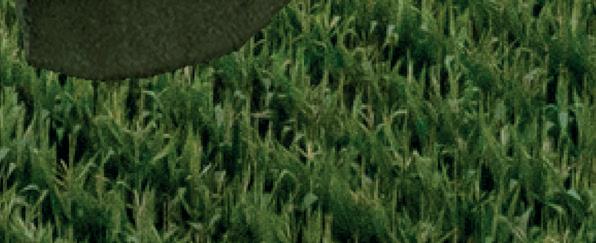




























































As at mid-May, export log prices have reached what looks to be the bottom of the cycle based on what we see happening in China and India. New Zealand domestic prices are holding level with a tick up in demand in some segments.
] with Allan Laurie MnZIF
] Laurie Forestry Ltd
We are currently experiencing elevated enquiry for more logs from our local sawmill owners. This is something we have not seen in a long time, long may it continue.
The bottom of the export market is certainly not as severe as at the same time in 2024. Around New Zealand many forest owners have pulled back production rather than lay logging crews off.
This has resulted in reduced log volumes being delivered to ports and that is exactly what is needed to allow the China and India markets to catch breath.
Across the China eastern seaboard, daily sales have been ticking along well. These are not to levels we have seen in prior years, but at numbers hovering close to 60,000 m3 per day usage, it is clear demand is good but not great.
As reported last month, the price falls in the market are the direct consequence of over production in New Zealand. Some of that is driven by some exporters taking big risks and trading losses, offering fixed prices over several months to gain market share.
In some cases, the fixed prices are well above where they need to be for sustainability, thus the short-term gains stand to be eroded by longer term losses amplified by over-supply. Inevitably, my 30+ years of expe-

rience in forest products marketing tells me there will be casualties at the outer extremities of this behaviour.
Within this jostling for position, prices for logs landed in China have remained remarkably stable. Compared to last month, about a US$2 per m3 drop. At the New Zealand wharf gate, a lift in the US$/KIWI$ exchange rate has helped to reduce price levels with the combination seeing log production being tempered.
In China, inventory has remained around 4.1 million cubic metres, changing very little over the last two months. This is too high for a market with an ever-watching eye over Donald Trump’s tariff antics. A reduced vessel flow from NZ in May should see inventory reduce, and again that is exactly what is needed.




I have stated many times how I believed tariffs will play out and the net impacts to US consumers and economy. The feedback I have been hearing is many US citizens believe China will pay the tariffs. This just proves propaganda and ignorance prevails.
A recent report from FOREX NZ Ltd stated “Walmart, the world’s largest retailer, announced o/night that they would soon start raising prices later this month as a means to pass on the tariff costs onto consumers.
This is likely to be the start of everyone doing this, as the reality that ultimately it is US consumers who will pay for them, starts to hit home”.
In the increasingly important market of India, prices have remained unchanged with trade in May at the same levels as last
month. There is a pervading commentary that suggests we are at the bottom of the market.
I mentioned in a prior report an India trader had been purchasing logs at well above market prices and selling at below market prices significantly oversupplying and upsetting the market, in the end, promulgating the recent downward slide.
Turns out the trader was able to do this by scamming banks with fraudulent documents including executing Letters of Credit for nonexistent cargos. He now resides at Prime Minister Modi’s pleasure and is unlikely to see the light of day for a few years.
His departure has been positive for the market but issues of labour shortages and over supply of log continue to dominate and temper any opportunity for price improvement.
There were nine log vessels in April discharged at Kandla port and now one less than predicted earlier at 8 in May. On the surface, this is still one more than the market needs but the volume of unsold logs held in bond is now at very low levels. Although daily usage is not monitored, this suggests a reasonable lift in demand.
As always, please remember the thoroughly important message, “despite the challenges, it remains, as always, fundamentally important, the only way forward for climate, country and the planet, is to get out there and plant more trees”.




















The closure of the superphosphate manufacturing plants here in New Zealand is ongoing. They are old and the cost of upgrading to meet modern environmental standards will become prohibitive.
They are a relic of the days when high quality rock from Nauru and Christmas Island was available at low cost.
Pastures responded positively, Britain was a guaranteed market for farm produce, and lowest cost per unit of nutrient was a sound philosophy.
Times have changed. Pastures no longer respond as they once did and the demand for soluble phosphorus will necessarily decline to meet true maintenance.
The replacement for superphosphate is soft phosphate rock. Phosphate rock suitable for direct application to pasture contains around 30% calcium, much the same as ag.lime.
Research shows the speed at which phosphorus is released is dependent on the demand for calcium.
The reason calcium is essential is that all beneficial soil biology is stimulated by a steady supply of plant available calcium.
Research on lime and its positive effect on the activity and population of earthworms is well documented. Where beneficial earth-
worms thrive so do all other beneficial soil dwellers including fungi and bacteria.
The Olsen P test measures around 5% of total soil held phosphorus. Additional Resin and Total P tests are required to better ascertain the true phosphorus status.
The rate at which phosphorus moves from less available sites to become plant available is dependent on soil biology.
The ideal air content of soil is 25% and intensively farmed pastures seldom contain that amount. This negatively impacts pasture growth and the common response is to apply synthetic nitrogen.
Synthetic N speeds the removal of calcium and beneficial soil biology declines. It’s a steady downward spiral resulting in what is now recognised as an overall 20% decrease in annual pasture production since the late 1980’s.
Accepting that soil fertility is calcium, not phosphorus, driven is essential. Extra clover growth is stimulated resulting in more nitrogen being fixed reducing the necessity for synthetic nitrogen.
Clover is higher in calcium and energy than grasses which is why animals fatten

more quickly and milk production increases when animals graze clover dominant pasture.
For over twenty-five years top performing intensive grazing and dairy property owners have relied on CalciZest and DoloZest as the foundation of their farm performance.
CalciZest contains high quality lime along with soft carbon inoculated with a wide range of beneficial soil biology.
In clover: Clover is higher in calcium and energy than grasses which is why animals fatten more quickly and milk production increases when animals graze clover dominant pasture.
Autumn and winter are the ideal times to apply as pasture growth is often restricted by the build-up of dung, old root matter and litter on the soil surface.
Digestion always comes before growth and winter is the naturally designated digestion period.
Where magnesium is required DoloZest containing the same soft carbon and microbes with the lime content replaced by Golden Bay dolomite is applied. Phosphorus, sulphur, potassium and trace elements are added as required to ensure a total nutrient package.
Applying now ensures spring production is maximised. Increased growth also lifts feed quality as greater leaf surface area builds extra energy, a must for all animals in spring.
For more information call Peter on 0800 843 809 or 027 495 0041.








New Zealand Young Farmers chief executive Lynda Coppersmith will step down from her role following the FMG Young Farmer of the Year Grand Final in July, marking the end of a remarkable period of development for the organisation.
] by Kent Caddick
Board Chair Chloe Jones said that during her six-year tenure, Coppersmith led the successful implementation of a new digital platform for club management, expanded its sponsorship base despite challenging market conditions, and achieved record-breaking participation in competitions.
“Under Lynda’s leadership, we are developing a sustainable operating model, have increased our volunteer base, and expanded our sponsor family, effectively supporting the next generation of agricultural leaders,” Jones said.
“Lynda’s ability to navigate challenges while maintaining strong relationships with stakeholders, sponsors, and members has strengthened NZYF’s foundation, ensuring its financial sustainability and connection to the food and fibres sector.”
Lynda Coppersmith said she’s incredibly proud of what the small ten-person team at NZYF has achieved despite all the challenges thrown their way.
“The last six years have been full-on and forced us to think on our feet. Covid-19 saw us quickly pivot to make our competitions online, while changes to government funding have meant we’ve had to work a lot smarter,” Coppersmith said.
“I’m particularly proud of how our FMG Young Farmer of the Year contest has evolved. Not only is the competition growing in size each year, but it’s growing in diversity.
“In 2023 we had our first female overall winner, and this year, for the first time, every one of our regional finals has at least one female contestant. Overall, women make up 25% of this year’s finalists.”
“I’m passionate about the potential of our agricultural sector and it’s been heartening to see the growth of our two junior competitions, AgriKidsNZ and the FMG Junior Young Farmer of the Year. The huge demand for these events speaks volumes about the bright future of agriculture in New Zealand.”
‘Coppersmith, who will be staying on as chief executive until the Grand Final in July, said she feels it’s time for someone else to take over the reins.
“While I’ve had an amazing six years, I feel it’s time for a fresh set of eyes and new challenges. I’ve done my best to leave the organisation better than I found it, and I am sure my successor will do the same.”
Jones said the NZYF Board will now begin
the process of recruiting for the next chief executive.
“While keeping the organisation’s purpose and vision front and centre, we’re after someone who can build on the solid foundations Lynda has put in place.
“The right person will be a strategic thinker, great at building relationships, and genuinely passionate about the future of New Zealand’s agricultural sector,” Jones said.



I’m particularly proud of how our FMG Young Farmer of the Year contest has evolved. not only is the competition growing in size each year, but it’s growing in diversity.




Lynda Coppersmith
New Zealand Young Farmers Chief Executive


















Former chief executive of Beef + Lamb New Zealand Dr Scott Champion has been appointed as the new chief executive of the Foundation for Arable Research.
The Foundation for Arable Research (FAR) is an applied research organisation responsible to New Zealand arable growers.
Dr Champion will take over from current FAR chief executive Dr Alison Stewart on 1 July.
Champion said he is looking forward to supporting arable farmers as they work through the numerous challenges and opportunities facing their industry.
“Growers are dealing with a lot, understanding everything from how to reduce environmental impacts to meeting customer and consumer needs, and of course, remaining profitable,” Champion said.
“I’ve been involved in developing strategies and programmes to address some of these issues in both arable and other food and fibre industries, and look forward to




working with and supporting growers and the broader arable industry.”
FAR Board chair, Steven Bierema, said Dr Champion’s skills are well matched to the developing needs of New Zealand’s arable industry and its growers.
“Scott has been involved with the New Zealand and Australian food and fibre industries for 25 years, holding leadership and governance roles in research, tertiary education, marketing and industry good and has strong networks across agribusiness, government and other sectors,” Bierema said.
“He is a Founding Partner of consulting company Primary Purpose, the Programme Director of the Kellogg Rural Leadership Programme and a former Chief Executive of Beef + Lamb New Zealand and of the New Zealand Meat Board.
“All of this experience will be invaluable to FAR and our levy payers.”



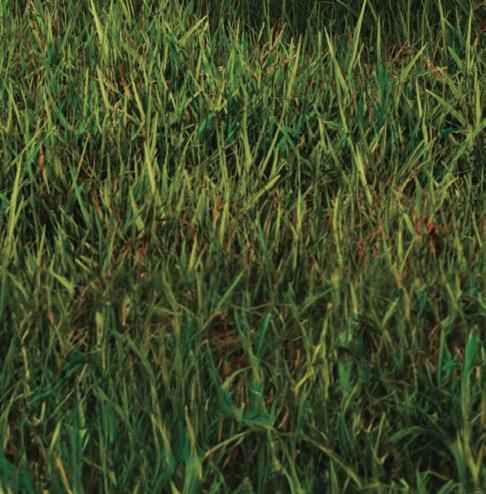




Challenges: new FAR chief executive Dr Scott Champion says there are numerous challenges and opportunities facing new Zealand’s arable industry.



Based in the small rural community of Pleasant Point, Beach Engineering Ltd has been proudly serving Canterbury since 1986.
] by Beach Engineering Ltd
The team has become a trusted name in general and agricultural engineering, supporting farmers, contractors, and rural businesses with practical, high-quality solutions.
Beach Engineering specialises in general engineering, structural steel work, custom fabrication, and machinery repairs, offering tailored services that meet the unique demands of rural life. Whether it’s designing a one-off solution for on-farm equipment, repairing essential machinery, or fabricating large-scale structural components, the skilled team delivers work that is dependable, efficient, and built to last.
Being locally owned and operated, Beach Engineering understands the needs of their community and takes pride in being part of its continued growth.
Their commitment to quality workmanship and honest service has earned them longstanding relationships across the region.
As rural industries face new challenges and opportunities, Beach Engineering continues to evolve.
Owner Warren Beach isn’t one to sit back, he’s known to personally deliver machinery and custom hay feeders to clients, making sure everything is running smoothly on-site.
It’s this kind of hands-on, go-the-extra-mile approach that has made Beach Engineering a name locals trust.
Beach Engineering offering practical, nofuss engineering that keeps Canterbury moving.
To find out more about how Beach Engineering can support your next project, visit: www.beachengineering.co.nz








I’ve recently had the pleasure of welcoming a new group of learners into the New Zealand Certificate in Irrigation Design programme, and it’s been genuinely uplifting to work with such engaged and capable people.
] by Stephen Mcnally ] Principal Technical Advisor ] IrrigationNZ
What’s particularly encouraging is how the course is now attracting participants from a wider range of sectors, not just those designing irrigation for agriculture and horticulture.
The recent intake includes professionals from sports turf and golf course design, a reflection of how relevant irrigation skills are becoming across both rural and urban landscapes.
Regardless of the setting, there’s a shared commitment to making the best use of our valuable water resources, whether sourced from a rural river or aquifer, or from an urban supply network.
At the heart of good irrigation practice is
the need to ensure that every litre of water applied is based on well-informed scheduling and a thorough understanding of how the system delivers it. That’s what’s driving the demand for deeper technical knowledge.
Of course, there are big differences between the irrigation needs and system components – such as for arable crops under pivots and the finely tuned pop-up sprinkler systems keeping a golf green in perfect condition.
The core principles of good irrigation design however, remain the same: understanding the client’s objectives, figuring out what’s needed, and delivering a system that performs well, conserves resources, and meets expectations.
It’s about being a competent and diligent designer – not just technically, but professionally.

BY LINDSAY






IRRIGATE WITH CONFIDENCE.


IRRIGATION SYSTEMS REMOTE MANAGEMENT PRECISION VRI






In the course, we follow the guidance of the IrrigationNZ Code of Practice for Irrigation Design and cover the detailed knowledge you’d expect, such as hydraulic calculations for pipe sizing, how to optimise pump and motor selection, and how to manage the electrical and automation side of things.
These are essential tools for any designer, yet the job is much broader than just technical specs. A good designer also understands people, processes, and how to navigate project risks, responsibilities and opportunities from concept right through to commissioning.
One area we give considerable attention to is the interface between irrigation design and regulatory requirements. We take a close look at national freshwater policy direction, regional planning rules, consent conditions, and the environmental expectations placed on water use – not just how much water you can take, but how, when, and where you can use it responsibly.
These conditions exist for good reason, and they underpin our social licence to continue using freshwater for growing food and maintaining green spaces for our communities.
It’s fascinating to take the learners on a discovery journey, zooming in on the tiny mechanisms that make plants tick – root hairs, xylem, stomata, even guttation – which act like miniature pumps, pipelines, flow regulators and pressure valves.
These biological processes respond to soil texture and moisture, climate factors, and irrigation scheduling in ways that a good irrigation system design can support or, if done badly, disrupt.
When we say good irrigation design is about delivering water efficiently and effec-
tively, it’s these tiny systems we’re really working with, it’s not just about huge pipes and pumps, it’s about helping living systems function at their best.
In our course opening sessions, we step back and look at the big picture too. As irrigation system designers, we are fundamentally contributing to New Zealand’s ability to produce high-quality food, maintain recreational spaces, and support community wellbeing.
With the United Nations projecting a global population of nearly 10 billion by 2050, our work carries real responsibility to consumers worldwide and locally.
New Zealand’s abundant natural freshwater puts us in a good position, but we must continue to lead with integrity and apply sound science to our irrigation practices. That means thinking beyond the immediate job of selecting and pricing components – it’s about helping our communities thrive and efficiently protecting the natural resources we rely on.
So next time you sit down to enjoy a nutritious locally grown meal, sign your golf scorecard after a great round, or watch a team take the field on a perfect pitch, take a moment to appreciate the thought and care that goes into delivering water in just the right way.
Behind those green spaces and full plates needs to be someone who’s thought hard about how to design an irrigation system that supports life – from root tip to water main.
And if you’ve ever wondered about what goes into an irrigation design process, or how wide a field it really covers, keep an eye out for upcoming training opportunities.
You might be surprised at the depth and diversity of knowledge involved – and the positive impact you could have.






Do you supply drinking water to more than one household from the same water source? If so, you are a drinking water supplier and are responsible for ensuring the provision of safe drinking water.
But wait, I thought there was an exemption for domestic water supplies to fewer than 25 people? In August 2024, the government proposed this amendment, but the Water Services Act 2021 remains unchanged.
What does this mean for me?
Under the Water Services Act 2021, as a drinking water supplier you must ensure supply of safe drinking water. You need to be registered with The Water Services Authority, Taumata Arowai, by November 2025 and fully compliant with the Water Services Act by November 2028.
You can easily register your supply via the Taumata Arowai website.
Rules and regulations under the Act reflect the size of the population served, with less rules for smaller supplies. As a supplier you can choose to either meet requirements for the relevant size supply under the Drinking Water Quality Assurance Rules (2022 updated 1 January 2025) or follow an ‘Acceptable Solution’ prescribed by Taumata Arowai.
If you’re reading this, you’re most like classified as a Very Small Supplier (providing water to <25 people, or <50 people for <60 days/year). Under this classification, you’re required to take a microbial sample every 6 months, with additional sampling required if any nasties are detected. There are no other requirements unless you’re planning on exceeding 50 people.
If you’re supplying drinking water to a number of households, you may classify as a Small Supplier (26-100 people) or Medium Supplier (101-500 people).
These categories have a greater requirement for water sampling, and generally require filtration, UV disinfection or chlorination, treated water sampling, and backflow prevention.
You also need a water safety plan and to submit water quality results to Taumata Arowai. The government has not signalled any intent to remove or alter these categories.

If these don’t appeal to you, ensuring supply of safe drinking water via an ‘Acceptable Solution’ may be a better option. Currently, there acceptable solutions for Small Mixed-Use Supplier (mostly water agricultural but small portion for domestic use), Bore/Spring Water source, and Roof Water source. Each solution specifies the level of sampling, filtration, and water treatment required.
Safe drinking water must be supplied under the Act. Even if you aren’t captured under these regulations and provide your own water, the onus is still on you to know what’s coming through your tap.


If you’ve never sampled your drinking water, we strongly encourage you do so regularly (at least once a year).
As land and water use changes, so too does the risk of your drinking water being contaminated. Keeping a watching eye on the quality of your drinking water means you can act to ensure poor water quality does not impact the health of your family, friends, and colleagues.
Further information can be found on the Taumata Arowai website, where guidance is continually being updated. Or get in touch to chat about your best pathway to compliance.

‘
Pure promise: A drinking water supplier is responsible for ensuring the provision of safe drinking water.

Keeping a watching eye on the quality of your drinking water means you can act to ensure poor water quality does not impact the health of your family, friends, and colleagues.


] by nicky Hyslop
] Director Beef + Lamb New Zealand
It is this period, between the busyness of summer and the intensity of feeding out and shifting breaks over winter, that we can really enjoy farming, especially when we have plentiful feed and are seeing improved returns for our products.
Our region has had a fantastic autumn with regular rainfall punctuating warm autumn days. ‘Intensively grazed winter forage crops, when managed correctly, pose minimal risk to animal welfare and water quality.
I encourage farmers to take any opportunity to get off-farm at this time of year. While there are always jobs to do, it is easier to take a few hours off here and there before winter kicks in. Beef + Lamb New Zealand has some great workshops and events coming up in the next few weeks to help build your knowledge base. Check out the Events section on the B+LNZ website.
I have seen some outstanding winter forage crops as I’ve been travelling through Central Canterbury and stock will soon be transitioning onto these crops. Before grazing starts, I recommend farmers have a Winter Grazing Plan in place.
These plans help with risk assessment and mitigation and ensure the whole farm team knows what is required when grazing forage paddocks this winter.

Winter grazing practices have changed significantly over recent years. We need to continue to demonstrate to regulators and the general public that when managed correctly, intensively grazed winter forage crops are a valuable tool that pose minimal risk to animal welfare and water quality.
In March, B+LNZ Genetics launched nProve Beef, an on-line tool to help commercial beef breeders find the bulls that best meet their breeding objectives.
Based on the successful nProve Sheep, nProve Beef is now available for use in the lead-up to the bull buying season.
Users put in the criteria aligning with their breeding objectives and nProve Beef will come up with a range of breeders who meet




those criteria. Within those breeders, there will also be a number of bulls that will meet the buyer’s requirements.
It means that farmers don’t need to know the exact numbers, or EBVs, for each breed. Instead, users can use sliders to select the top – or more moderate animals – for a particular trait.
It’s worth jumping on and having a play to see how the tool works. Bulls are not cheap, so it’s worth using every available tool to help select the animals that best suit your needs.
Foot and Mouth Disease is an ever-present threat to our agricultural sector and economy, with several outbreaks recently reported in Europe.
While the priority remains keeping the disease out, work has been under way for several years to ensure we can respond as quickly as possible if it does arrive and minimise the damage to our sector and economy.
B+LNZ is seeking levy payer approval to join an Operational Agreement between industry and government that seeks to ensure we’re as prepared as possible for a potential outbreak and sets out how a response effort would be funded.
B+LNZ cannot join the Operational Agreement without levy payer approval so please, have your say.
Voting closes on 16 May and there is a dedicated page on B+LnZ’s website to answer any questions.




With a strong season behind them and a busy year ahead, the team at Kaiwara Angus is feeling confident about the future.
After months of favourable conditions across Canterbury, the farm is seeing the kind of results that set a positive tone for the year to come.
“Where hills are usually brown and burnt-off by this time of year, pastures have remained lush and green since November. The benefits of this exceptional season are being seen right across the farm, from the sheep yards to the cattle paddocks,” says stud breeder George Johns.
George says scanning has delivered strong results. The calves, weaned from the R2s in late January, are averaging 220kg, with top weights hitting 290kg. From the R1s, only two out of 110 heifers scanned dry, a success attributed in part to iodine and selenium supplementation. Despite going to the bull at just 330kg, the heifers were on a rising plane and have responded well.
A standout addition to the Kaiwara Angus program has been the new sire purchased from Kenhardt Angus in Hawke’s Bay. Acquired in 2023, the bull exemplifies the traits the program prioritises: easy-fleshing, free-moving, with excellent depth, strong width at the pins, and a powerful back end. He has run him with 60 R2 heifers this season and he has performed exceptionally, with only one dry cow and a tight 40day calving spread.
Preparations are well underway for the annual bull sale on 13 June. The Kaiwara team is looking forward to presenting this year’s Angus offering of 30 R2 bulls and remains committed to breeding quality, functional genetics suited to commercial farming conditions.
Farmers interested in viewing bulls or discussing breeding goals are encouraged to get in touch.
“Please feel free to reach out if you’d like a visit,” George says.
“It’s always great to understand our client’s operations and how our bulls might fit their operation.”
With a strong foundation laid this season, 2025 is shaping up to be another year of progress and performance for Kaiwara Angus.
Catalogue available at www.kawiarafarm.com/catalogues





































New Zealand’s newest ute has arrived from premium-Chinese truck brand JAC (pronounced ‘Jack’) with the top-of-the-line T9 ute now in dealerships across the country.
]Advertorial supplied by Avon City
“Like its no-nonsense name, the price is pretty straight-up too,” says JAC general manager, Andrew Craw.
“Targeted at the Kiwi tradie and farmer’s market it’s fair to say this JAC is stacked with features and extras, so you’d be hard pressed to find another ute offering more bang for buck given all the tech and specs stacked in the T9.”
The already internationally proven JAC T9 Ute has a 5 Star ANCAP Safety Rating, 18 ADAS safety features, a genuine high-low 4WD system with diff lock and modes including ECO, SPORT and SNOW, plus a pie warmer.
“You can’t have a tradie or farmer’s ute without a pie warmer, and the hot/cool box within the console can be chilled or warmed from the AC and heater. None of these features are like teasing optional extras, everything’s been squeezed into this one top-of-the-line model up-front so it’s a simple full-spec, one price ute,” says Craw.
Other top-spec standard features include rock slider side steps, black sports bar, premium heated leather seats which are pow-
er adjustable, and wireless mobile charging with a 220V power point in the back for charging those power tool batteries.
Under the hood the goodness keeps giving with a 2L Turbo engine providing more torque and tow-rating than farmers need for most jobs.
“It’s a workhorse, not a show pony. In fact, it shares the DNA of JAC light duty trucks,” Craw says.
“T9 Ute parts come from the same top suppliers supplying JAC trucks. Well-known manufacturers such as Bosch and Honeywell. The JAC drivetrain and 4WD system also uses premium parts from BorgWarner for its ZF 8 Speed Automatic, BorgWarner Turbo and Transfer Case, and Eaton for the Diff Lock.”
Built for the toughest environments and with an impressive track record and sales pedigree in South Africa, Asia, South America and Australia, more than 320,000 JAC utes already proven themselves after rolling out of the state-of-the-art factory in China.
So, prove it to yourself by taking the JAC T9 Ute for a test drive at your nearest JAC dealership.



The JAC T9 ute is powered by a 2L Turbo engine providing more torque and tow-rating than farmers need for most jobs, and comes with a pie warmer and drink cooler as standard.








WorkSafe is reminding farm workers to be safe when it comes to operating vehicles, after two farmers died over Easter weekend while using vehicles on farm.
One person died after a farm vehicle incident near Taupo on Easter Saturday while another person was killed on farm following an incident with a tractor in Clutha.
Farm vehicle incidents are the second highest cause of workplace deaths in New Zealand.
To be safe when using farm vehicles you need to:
• choose the right vehicle for the job
• make sure the vehicle is up to the job
• make sure the driver is up to the job
• read the vehicle owner’s manual
• wear a seatbelt, if one is fitted – on and off the farm
• wear a helmet when required
• watch where you are going.
Make sure the vehicle is up to the job.
Your vehicle supplier and the owner’s manual will tell you what needs to be maintained and when, and includes advice about trailers, loads, maintenance and passengers.
Before starting a task with a vehicle that you haven’t used in a while, or has been used by someone else, you should check it to make sure:


• it has fuel, oil and coolant
• the tyres are the correct pressure and have enough tread
• wheel nuts are firmly secured
• the brakes work
• any active safety system, such as traction control, is operational
• there’s no rust that affects the safety of the vehicle
• the engine is clean
• the lights work and are clean
• the steering isn’t loose.
You also need to get to know how the vehicle performs, especially before using it in a challenging situation, and make sure the driver is up to the job.
There are farm vehicle training courses run by providers in most parts of New Zealand. Formal training courses are the best option to learn techniques to safely operate a farm vehicle. Get training and have regular refresher training to avoid developing bad habits.
This article was supplied with permission by Infranews. For more go to: safetynews.co.nz or infrastructurenews.co.nz

Choose wisely: This table may help you choose the safest vehicle for the job, and remember, the right vehicle yesterday might not be the right one today.
















































































H E T R A C T O R O F
T H E Y E A R I S H E R E .






At Agritechnica 2023, Fendt unveiled the completely newly developed Fendt 600 Vario series to the world, winning both the “Farm Machine 2024” Award in the mid range tractor category as well as the prestigious “Audience choice award”. The accolades have continued to roll in since, more recently winning the compact four-cylinder ‘MidPower Tractor of the Year 2025’ at EIMA in Italy. The multi award winner has now landed on New Zealand shores, ready to tackle the challenges of Kiwi farming and beyond.
Compact in size but powerful in performance, the new 600 Vario is built with the innovation you'd expect from Fendt. At its core is the Fendt VarioDrive transmission for intelligent power delivery, the new AGCO Power CORE50 low-revving engine, and the FendtOne operating system — designed to make long working days more productive and less tiring. In addition, a suite of new options is available, including Variogrip and reversible fan.
Don’t just take our word for it, though. Put the Tractor of the Year to the test and see for yourself. Speak to your local Fendt dealer today about a 600 Series demo drive.







